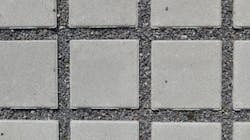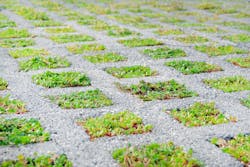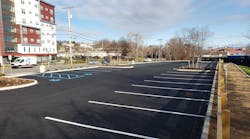City planners and others are increasingly facing severe weather events in their jurisdictions, and some have become interested in permeable pavement solutions to reduce flooding. Here are some advantages linked to that option.
1. Lower risk of flooding
Permeable pavement allows stormwater to drain through it. Reduced flooding is one of the most significant benefits of this approach. Many areas worldwide have an above-average flooding risk, making prompt action necessary.
A February 2023 study of Europe highlights the need for urgent changes and better preparedness. It showed that flooding in the United Kingdom and European Union already costs about €7.6 billion annually and affects 160,000 people. However, if the temperature rose by 3 degrees Celsius due to climate change, the expenses would increase to €44 billion and harm 500,000 Europeans annually until the end of the century without mitigation strategies.
Scientists believe climate change could devastate the world’s infrastructure if people do not become more proactive now. Permeable pavement alone will not solve all the issues, but it is a practical and proven possibility to consider.
Australia has already experienced terrible flooding, leading scientists to diligently seek realistic solutions. In 2022, floods on the continent left thousands of people homeless, caused 23 fatalities and cost approximately $1.5 billion in damage.
The success of permeable pavement efforts depends largely on location-specific factors, such as soil type, the pavement’s thickness and the rainfall’s intensity.
However, Australian researchers attempted to minimize the uncertainty by gathering data from 107 Australian towns and cities and using it to create the best version of permeable pavement. Their potential scenario assumed a 5% probability of excessive rainfall for storms lasting 30 minutes.
The team then built an algorithm to determine each location's most prevalent soil types.
The results indicated permeable pavements could store 70% of the rainfall, resulting in only 30% runoff. That is if the pavement has a base course layer tailored to the local soil and average rainfall characteristics. The group believes this option will help conquer road flooding.
One of the key takeaways they learned was that the pavement must be thicker to accommodate less-permeable soils or more intense rainfall. However, one-third of Australia’s roads receive low to moderate rain amounts. In those places, a base layer of only 100 millimeters would suffice. In contrast, an area with high rainfall and clay soils needs significantly thicker pavements to reduce runoff.
2. Reduced costs
Although permeable pavement stormwater management does not guarantee cost savings, it can happen when people get involved in adequate planning. For example, some projects are more expensive upfront but save people money in the long run by making stormwater management easier.
Consider the case of a North Carolina project involving a medical building. People wanted to install permeable pavement while accommodating the needs of surrounding businesses and residences and adhering to stormwater management and water quality regulations.
After getting details about those efforts, they decided to move ahead with that option. The results ultimately saved the developer more than $200,000.
It took three weeks for the team to install the parking lot pavers in a herringbone pattern. Now, there is little to no runoff from the medical building’s property, which is a notable advantage for other nearby tenants.
3. Improved water quality
Stormwater runoff can negatively impact water quality, introducing contaminants ranging from chemical pollutants to animal waste to local waterways. However, permeable pavements work in two ways to reduce such effects. They act as physical barriers to trap substances, restricting their spread. Additionally, the pavement can promote chemical breakdowns caused by bacteria and microorganisms that feed on bacteria.
Researchers from the University of Texas at San Antonio want to learn how different kinds of these pavement materials can enhance water quality. Their experiments involve installing four options on parking lots at a 204-acre site. They used permeable asphalt and concrete, along with plastic and permeable interlocking grid pavers.
The work also requires using solar-powered boxes that track water outflow the team will examine in the lab. They will look for suspended solids, heavy metals, bacteria and metals from vehicles.
Work elsewhere has already shown how permeable, interlocking concrete pavement causes a massive reduction in some pollutants. A study revealed a nitrate reduction of more than 70% and a 40% decrease in nitrogen. That data suggested permeable pavements are effective pretreatment options for stormwater harvesting.
4. Less water pooling
Some permeable pavement stormwater management plans involve minimizing slipperiness in icy weather. The traditional way to do that is to apply road salt. Although that method works, the substance eventually enters waterways and groundwater, potentially threatening wildlife.
A Minnesota team from the Local Road Research Board wondered how untreated permeable pavement compares to surfaces coated with salt in the winter, particularly regarding pooled water. They began by performing a literature review of permeable pavement usage and how such materials promote the melting of snow and ice.
Next, they set up equipment in a controlled environment, allowing them to take pictures of surface pavement while collecting data on air, surface and internal pavement temperatures. After that, the group selected 22 sites with permeable and impermeable pavements. Besides measuring the surface and air temperatures at those locations, the researchers conducted friction tests and evaluated how well water dissipated from frozen pavement.
The results showed conventional pavements performed better than permeable ones in some regards. For example, snow and ice took longer to melt on 13 permeable pavements. Some of the impermeable surfaces also offered more friction.
However, the outcomes for permeable surfaces were most notable concerning pooled water. All permeable surfaces displayed less or equal pooling than their counterparts. At eight locations, the traditional materials had more collected water.
Another finding was that permeable surfaces are less likely to refreeze in the winter. Conversely, impermeable pavements do so more often, contributing to more slipperiness.
How will you explore the potential of permeable pavement?
These are some benefits of replacing conventional pavement with permeable types. However, individual results often depend on how well-suited the chosen strategies are to specific projects.
Studying the related factors and finding appropriate possibilities is an excellent way to optimize results and show your peers, clients and others that permeable pavements are viable ways to manage stormwater runoff. Weighing the pros and cons of permeable pavement for individual projects is a proven way to make informed decisions.







